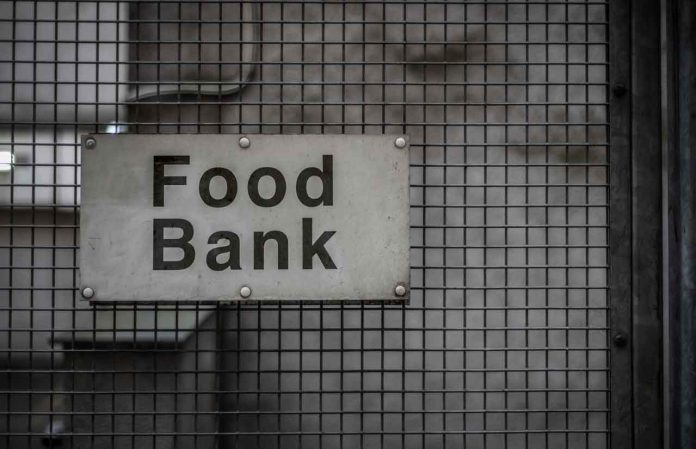Almost half of the people visiting food banks live alone. The single-household economy is clearly not doing so well. It’s time for some social retooling
By Sylvain Charlebois
Senior Fellow – Atlantic Institute For Market Studies
We’re reminded every year how many Canadians are left behind in our society, without enough food. Hunger Count 2019 has just been released.
The report says that despite a strong economy and living in one of the richest countries in the world, many Canadians still don’t have enough food.
The report says food banks have been visited 1.084 million times in the last year and 34.1 per cent of those visits were by children. These figures are roughly the same as last year but much lower than in 2010, which was a record year. And single-parent household visits are down significantly.
Not having a recession in over a decade will do that to food bank data, but more needs to be done.
Almost half of the people visiting food banks live alone. The single-household economy is clearly not doing so well. It seems the range of benefits provided to people who live alone is limited. In addition, most food bank users this year have some income, including those with student loans or those receiving a pension.
While food bank usage rates have declined in many parts of the country, Ontario, New Brunswick, and Newfoundland and Labrador report higher rates.
While food banks are a safe place, people don’t go to them because they want to. Unforeseen life circumstances force them to seek help. Almost 30 per cent of food bank users are either experiencing wage payment delays or have been laid off.
As well, family breakups, natural disasters, unexpected expenses or a sudden health crisis will often compel many to visit food banks. No government programs can provide immediate support.
This Hunger Count reminds us that the food bank network in Canada has matured into a solid social safety net for those in need, whatever their reasons.
The quality of food has improved – it’s no longer just canned goods or boxed macaroni and cheese. In many outlets, fresh produce and meat are offered regularly. Some food banks train clients how to cook, so they can prepare food at home and become more kitchen savvy. And cooking skills are the best tool to make food more affordable for a household.
Food banks continuously reinvent themselves. Beyond providing food, they help clients with income tax returns, offer referrals, and offer employment help, such as training and helping people find jobs.
Their game is no longer about supplying calories but rather about nurturing the human spirit, the whole person.
Food banks are safe harbours for the hungry and they’ve come a long way over the last few years. They went from being warehouses filled with people sorting food with the intent of supplying basic nutrition, to becoming sophisticated soul-centred networks wanting to focus on sustainable solutions for the community.
The reality, though, is that the average Canadian family of four spent $450 more on food in the last last year in order to eat well. Vegetable prices are up 17 per cent from last year. Price fluctuations for many food categories are cruelly unpredictable. Financial pressures on many households are mounting, which is why food banks are more relevant than ever.
But food banks need help.
In June, the federal government, through its new food policy, recognized food banks for the very first time, providing some well-needed support by way of funding refrigerators and freezers. That was a huge win.
But the need for a basic income for all Canadians remains. To help children and people who live alone, welfare and pension incomes aren’t nearly enough.
The federal government, not provinces, should launch pilot projects, accumulate data across the country and evaluate how basic income programs can be implemented throughout Canada.
Northern communities, often forgotten, would gain immensely from a basic income program. Given what’s happening with the job market, the arrival of robotics and the use of artificial intelligence, basic income programs are inevitable.
According to Statistics Canada, four million Canadians live alone. That number has doubled in the past 35 years and could increase to over five million by 2025. Many of these people could become financially vulnerable. As we look at food security, this is something we need to consider.
Hunger is invisible and the hungry rarely ask for help. And since hunger nurtures violence, hatred and fanaticism, we need reliable, effective social safety nets beyond what we currently have.
Food banks are at the forefront of our understanding of how to engage the vulnerable in our society, the ones who don’t want to be judged.
Food banks are brokers between those who need help and those who want to help them. It’s incredible and it works. We should be thankful for their work, as they perform small miracles daily.
Dr. Sylvain Charlebois is the senior director of the agri-food analytics lab and a professor in food distribution and policy at Dalhousie University, and a senior fellow with the Atlantic Institute for Market Studies.
The views, opinions, and positions expressed by all columnists and contributors are the author’s alone. They do not inherently or expressly reflect the views, opinions and/or positions of NetNewsLedger.







